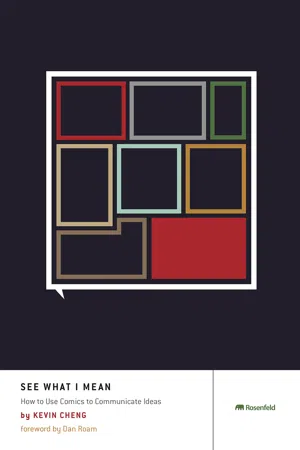
- 216 pages
- English
- ePUB (mobile friendly)
- Available on iOS & Android
eBook - ePub
About this book
If you're an executive, designer, product manager, marketer, or engineer, communication is part of your work. Using images and text in unique ways, comics can engage readers in ways traditional methods can't. In See What I Mean, you'll learn how to create comics about your products and processes without an illustrator—just like Google, eBay, and Adobe do.
Frequently asked questions
Yes, you can cancel anytime from the Subscription tab in your account settings on the Perlego website. Your subscription will stay active until the end of your current billing period. Learn how to cancel your subscription.
At the moment all of our mobile-responsive ePub books are available to download via the app. Most of our PDFs are also available to download and we're working on making the final remaining ones downloadable now. Learn more here.
Perlego offers two plans: Essential and Complete
- Essential is ideal for learners and professionals who enjoy exploring a wide range of subjects. Access the Essential Library with 800,000+ trusted titles and best-sellers across business, personal growth, and the humanities. Includes unlimited reading time and Standard Read Aloud voice.
- Complete: Perfect for advanced learners and researchers needing full, unrestricted access. Unlock 1.4M+ books across hundreds of subjects, including academic and specialized titles. The Complete Plan also includes advanced features like Premium Read Aloud and Research Assistant.
We are an online textbook subscription service, where you can get access to an entire online library for less than the price of a single book per month. With over 1 million books across 1000+ topics, we’ve got you covered! Learn more here.
Look out for the read-aloud symbol on your next book to see if you can listen to it. The read-aloud tool reads text aloud for you, highlighting the text as it is being read. You can pause it, speed it up and slow it down. Learn more here.
Yes! You can use the Perlego app on both iOS or Android devices to read anytime, anywhere — even offline. Perfect for commutes or when you’re on the go.
Please note we cannot support devices running on iOS 13 and Android 7 or earlier. Learn more about using the app.
Please note we cannot support devices running on iOS 13 and Android 7 or earlier. Learn more about using the app.
Yes, you can access See What I Mean by Kevin Cheng in PDF and/or ePUB format, as well as other popular books in Design & Graphic Design. We have over one million books available in our catalogue for you to explore.
Information
CHAPTER 1

Comics?!




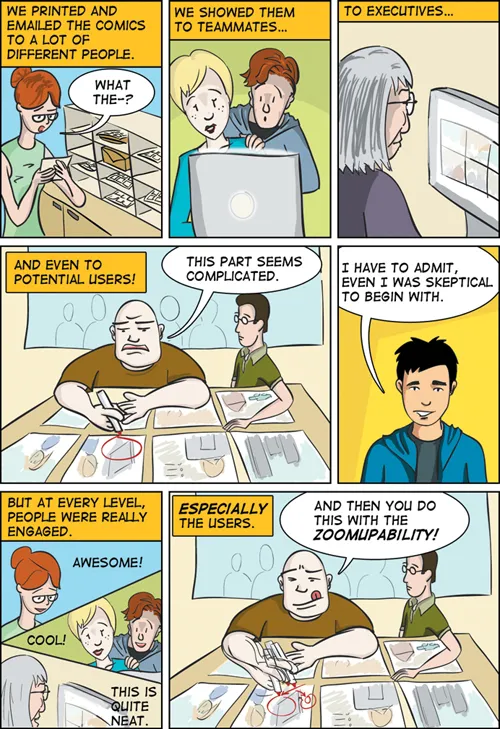
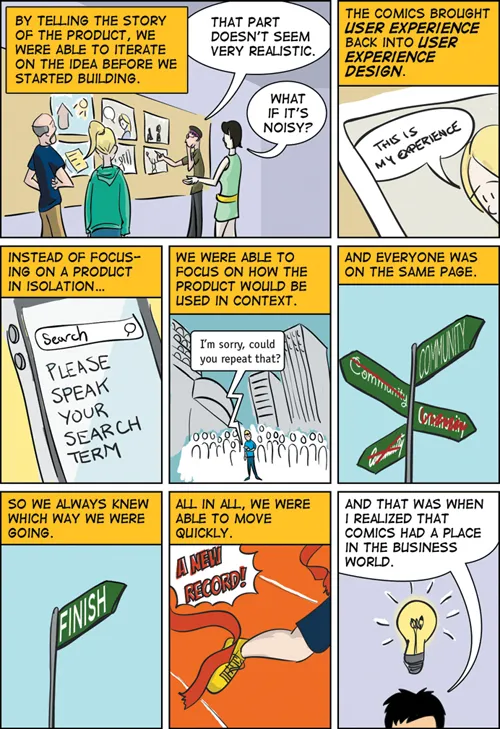
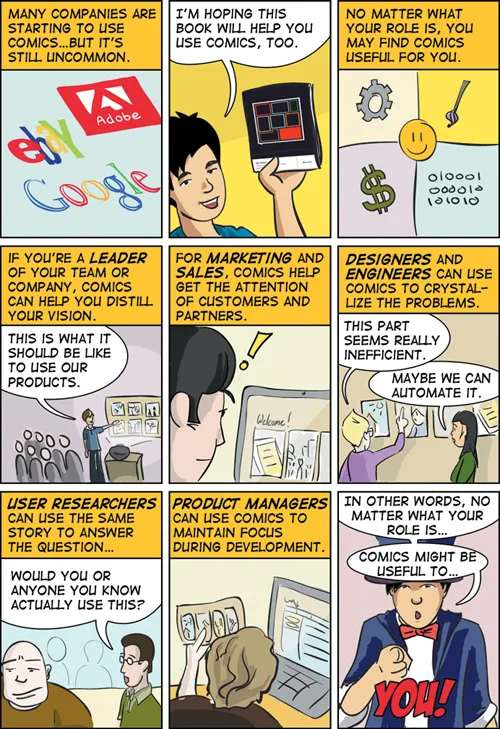
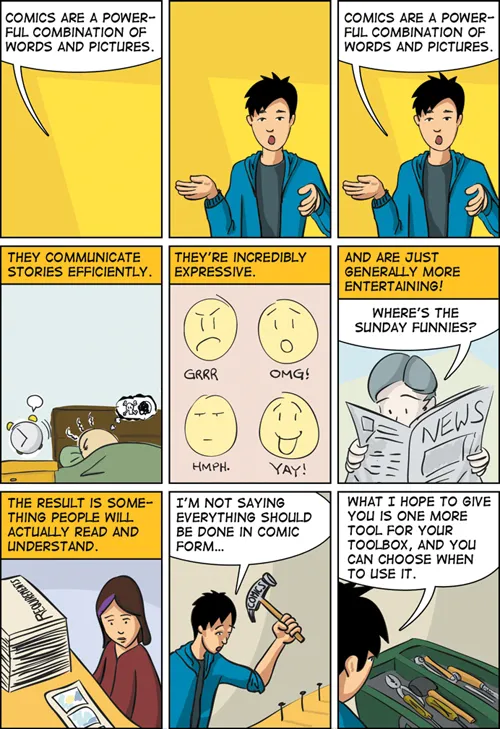
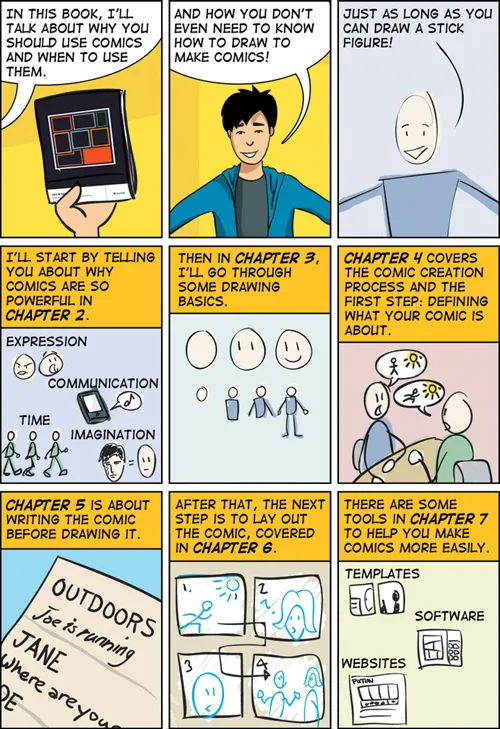
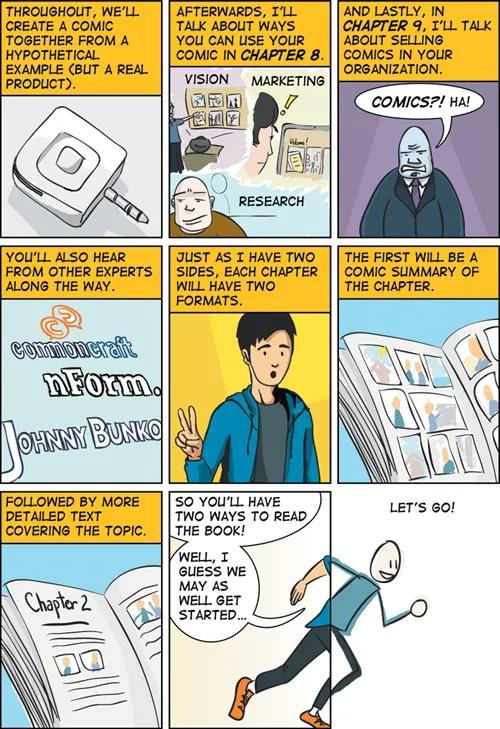
CHAPTER 2

Properties of Comics
Comics Around the World | 17 |
Comics for Young and Old | 18 |
Comic Formats | 18 |
Anatomy of a Comic | 19 |
The Four Properties of Comics | 20 |
Summary | 36 |


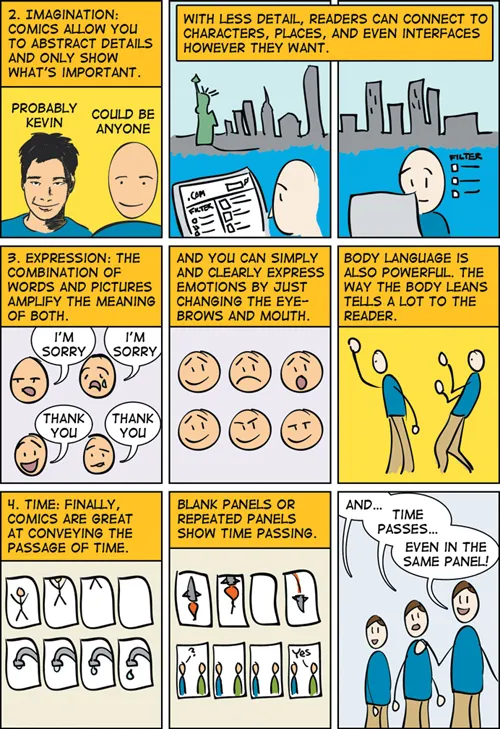
The word “comics” carries many connotations. In North America, the word is often synonymous with “cartoons” and considered to be something for children. For example, cartoons might be associated with Batman, Superman, Spider-Man, and X-Men or with Garfield, Calvin & Hobbes, and The Family Circus.
Merriam–Webster defines comics (or comic) as:
- comedian (a stand-up comic)
- the comic element
- a: comic strip, b: comic book, c (plural): the part of a newspaper devoted to comic strips
and subsequently defines a comic strip as:
- a group of cartoons in narrative sequence
While Sunday comics are a defining part of many people’s experience with comics, it only represents a fraction of what comics are. In my opinion, this definition is indicative of how comics are underappreciated as an art form and a communication medium. In fact, comics have had a long-standing worldwide cultural impact across all ages.
Comics Around the World
In Japan, comics are known as manga. They are seen as a popular and mainstream form of entertainment, covering a wide variety of topics, including sports, fantasy, romance, business, and education. The audience demographic is just as broad as the subject matter.
When best-selling author Daniel Pink was living in Tokyo, he noticed how prevalent manga was. As an experiment, he attempted to walk a city block without seeing somebody holding or reading a comic book—and failed. He was so inspired by this medium that he decided to write his next business book, The Adventures of Johnny Bunko, in comic form. In Chapter 8, “Applying Comics,” we’ll hear more from Daniel about his book and why comics worked for him.
Comics are quite popular in Europe as well. The Belgian series Adventures of Tin Tin and the French series Asterix were so popular that they were both translated into over 80 languages. Their longevity is equally impressive: Tin Tin first appeared in 1929, and its collections are still being reprinted today, while Asterix has been around since 1959 and is still running!
Comics for Young and Old
It may surprise you as it did me that a comic book was named Time Magazine’s Book of the Year. There’s nothing wrong with comics that are “just for kids”; I still thoroughly enjoy comic strips such as Foxtrot or Calvin & Hobbes, as well as the occasional superhero comic or movie. But in the last decade, a surge of comics tackling more serious subjects has emerged that can only be described as art. The New York Times recognized this trend by starting a Graphic Books Best Seller List category in 2009.
Even if you don’t end up drawing a single stick figure, I hope you check out some of these masterpieces. They can illustrate the power of the medium far better than I ever could and will entertain you at the same time. Their subject matter is as diverse as their art styles:
• Fun Home: A Family Tragicomic, a memoir by Alison Bechdel, deals with sexual orientation, suicide, and complex family relationships. It’s the book that made the New York Times Best Seller List before there was a graphic books category and also won Book of the Year.
• 300 and Sin City are two comics by American writer and artist Frank Miller. One is a violent fictional retelling of the B...
Table of contents
- Cover Page
- Title Page
- Copyright Page
- DEDICATION
- HOW TO USE THIS BOOK
- FREQUENTLY ASKED QUESTIONS
- CONTENTS
- FOREWORD
- INTRODUCTION
- CHAPTER 1 Comics?!
- CHAPTER 2 Properties of Comics
- CHAPTER 3 You Don’t Need to Be an Artist
- CHAPTER 4 What’s Your Comic About?
- CHAPTER 5 Writing the Story
- CHAPTER 6 Laying Out the Comic
- CHAPTER 7 Drawing and Refining
- CHAPTER 8 Applying Comics
- CHAPTER 9 Breaking Down the Barriers
- CHAPTER 10 Wrapping Up
- APPENDIX Useful Templates and References
- Index
- ACKNOWLEDGMENTS
- ABOUT THE AUTHOR
- Footnote